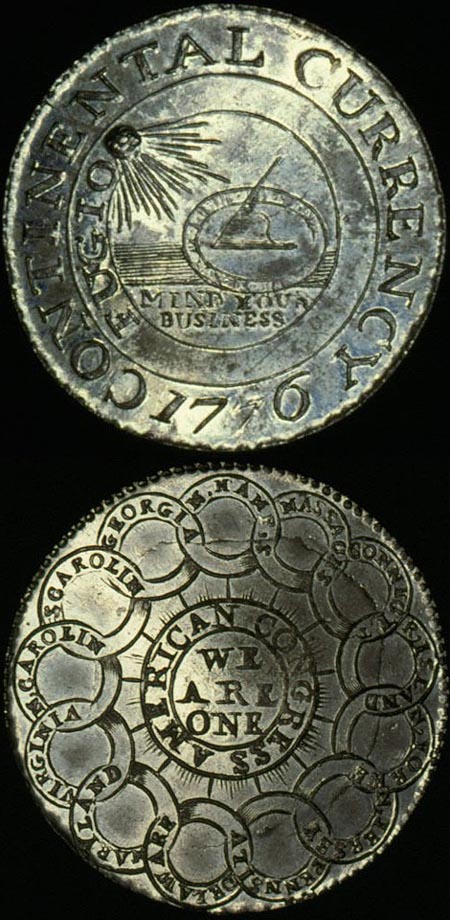Loosely united even in the midst of the Revolutionary War, the new states had no unity whatever in coinage and currency. Each began printing its own paper currency valued both in British-style pounds, shillings and pence and in the universally familiar Spanish Milled dollar.
Sometime in July 1776, most probably in New York City, a distinctive new coinage, known to numismatists as the Continental Dollar, was struck in silver, brass and pewter. More than 60 survive today, of which the larger number are pewter.
The coins’ distinctively American designs are attributed to philosopher, almanac writer and statesman Benjamin Franklin. The obverse bears a sundial with the Franklin-esque Latin motto FUGIO, “I (Time) Fly,” coupled with an English admonition MIND YOUR BUSINESS below. The legend CONTINENTAL CURRENCY and bold date 1776 appear within the outer beaded border. The reverse presents 13 continuous links, each bearing a state name or abbreviation from N’HAMP’S to VIRGINIA. At the center, AMERICAN CONGRESS surrounds the hopeful motto WE ARE ONE.
A favorite with collectors of Early American coinage, Continental dollars are sometimes included in advanced type collections as an example of the first U.S. dollar coin.

